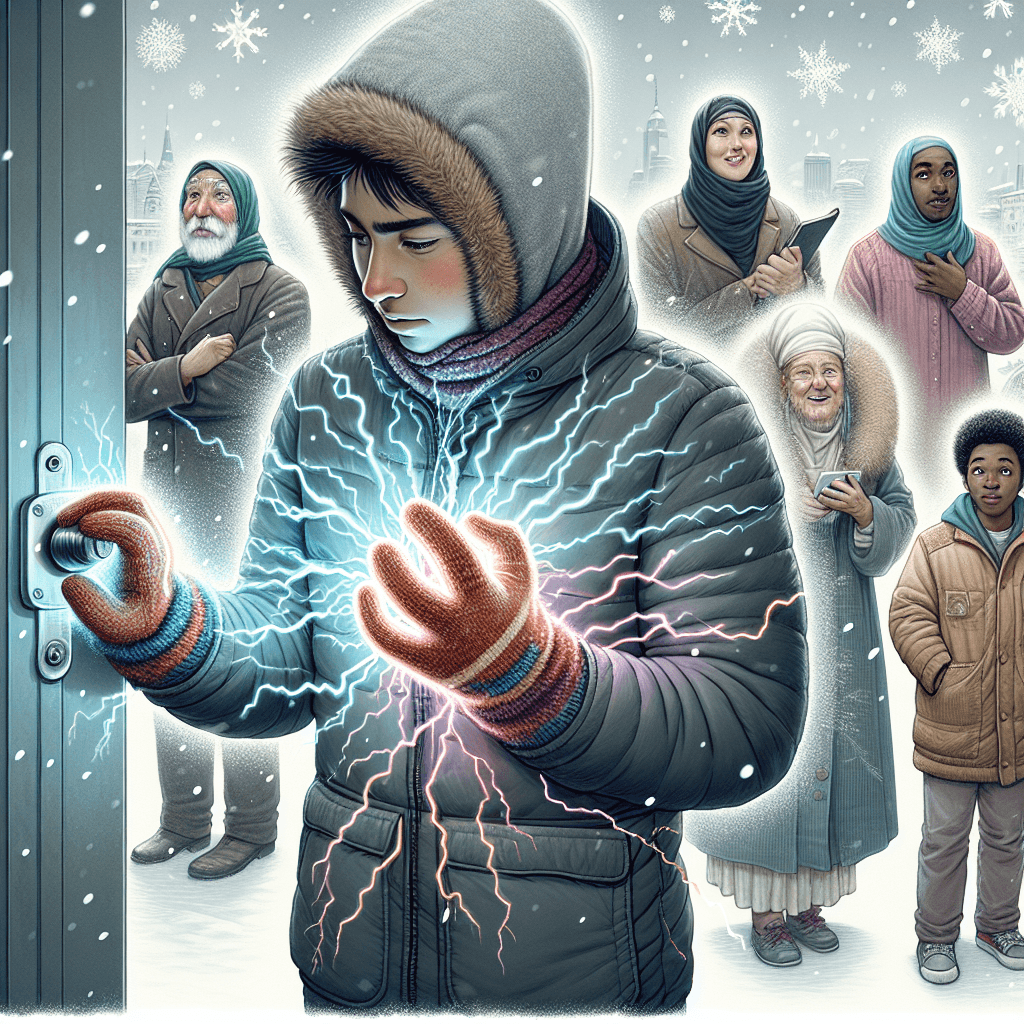Zap! The Science Behind Why You Get More Static Shocks in Winter
Ever wonder why you get zapped by a doorknob more often in the colder months? Uncover the surprising science behind winter static electricity and why dry air turns you into a walking conductor.


Too Long; Didn't Read
You get more static shocks in winter because the air is drier. Low humidity allows static charge to build up on your body more easily, resulting in a shock when you touch a conductive object like a doorknob.
Zap! Why Winter Turns Us Into Human Leyden Jars: Unpacking the Science Behind Static Shocks
Ever shuffled across a carpet in winter, reached for a doorknob, and ZAP – received an unwelcome jolt? Or perhaps you've petted your cat only to have its fur crackle and stand on end? These static electricity shocks seem to become a much more frequent, and sometimes startling, part of life during the colder months. But why do you get zapped by static electricity shocks much more often during winter? It's not just your imagination; there's clear science behind this seasonal phenomenon. This post will delve into the physics of static electricity and explain exactly why winter conditions create the perfect storm for those pesky zaps.
What Exactly is Static Electricity?
Before we understand why it's worse in winter, let's quickly revisit what static electricity is. At its core, it's an imbalance of electric charges within or on the surface of a material. Everything is made of atoms, which contain positively charged protons, negatively charged electrons, and neutral neutrons. Usually, atoms have an equal number of protons and electrons, making them electrically neutral.
However, electrons can sometimes be transferred from one object to another, especially when two different materials rub together. This process is called the triboelectric effect. One material might lose electrons (becoming positively charged), while the other gains electrons (becoming negatively charged). This creates a static charge build-up. The "shock" or "zap" you feel is the rapid transfer of these excess electrons – a static discharge – when you touch an object with a different electrical potential, particularly a good conductor like a metal doorknob, allowing the charges to equalize.
The Key Culprit: Winter Air and Low Humidity
The single biggest reason static shocks are more prevalent in winter is low humidity.
How Humidity Affects Static Charge
Air always contains some amount of water vapor – this is what we measure as humidity. Water molecules are electrically conductive. When the air is humid (like in summer), these water molecules form a thin, invisible layer on the surface of most objects, including your skin and clothes. This moisture layer helps to continuously bleed off or dissipate any static charge that starts to build up, preventing it from accumulating to the point where a noticeable discharge can occur. Think of it as a tiny, invisible pathway for excess electrons to flow away harmlessly into the air or surroundings.
Why Winter Air is Drier
Winter air is naturally drier for two main reasons:
- Cold Air Holds Less Moisture: Colder air simply cannot hold as much water vapor as warmer air. Even if the relative humidity outside is high on a cold day, the absolute amount of moisture in the air is low.
- Indoor Heating: When we bring that cold, low-moisture air inside and heat it, its temperature rises dramatically, but the amount of moisture stays the same. This causes the relative humidity indoors to plummet, often falling well below comfortable levels (ideally 30-50%).
This extremely dry indoor air acts as an excellent electrical insulator. Without the conductive moisture layer on surfaces, the static charges generated by friction (walking on carpet, pulling off a sweater) have nowhere to go. They build up on your body until you touch something conductive, providing an abrupt path for the electrons to jump, resulting in that familiar zap.
Material Choices Amplify the Effect
While dry air is the primary enabler, the materials you wear and interact with also play a significant role.
- Insulators Rule: Materials like wool, nylon, polyester, fleece, and rubber (often found in shoe soles) are excellent electrical insulators. They readily gain or lose electrons through friction and hold onto that charge tenaciously in dry conditions. Shuffling your rubber-soled shoes on a nylon carpet is a classic recipe for building up a significant static charge.
- Summer Fabrics: In contrast, materials common in summer clothing, like cotton, are less prone to significant static build-up. Leather-soled shoes also tend to generate less charge than rubber soles.
So, the combination of dry, insulating air and the prevalence of insulating materials in winter clothing and footwear creates the perfect conditions for frequent static shocks.
Conclusion: It's All About the Dry Air
That annoying winter zap isn't magic, nor is it a sign you've suddenly developed superpowers. The reason you get zapped by static electricity shocks much more often during winter boils down to physics, primarily the dramatically lower humidity levels both outdoors and especially indoors due to heating. This dry air prevents the natural dissipation of static charges built up through friction between common winter materials like wool, synthetics, and rubber. While usually just a minor annoyance, understanding the science behind static shocks can help explain why you might feel like a walking Van de Graaff generator during the colder months. So next time you get zapped, remember it's just the dry air and your insulating outfit working together!


